PARAGLIDING EQUIPMENT STORAGE: HOW TO MAINTAIN YOUR EQUIPMENT ?

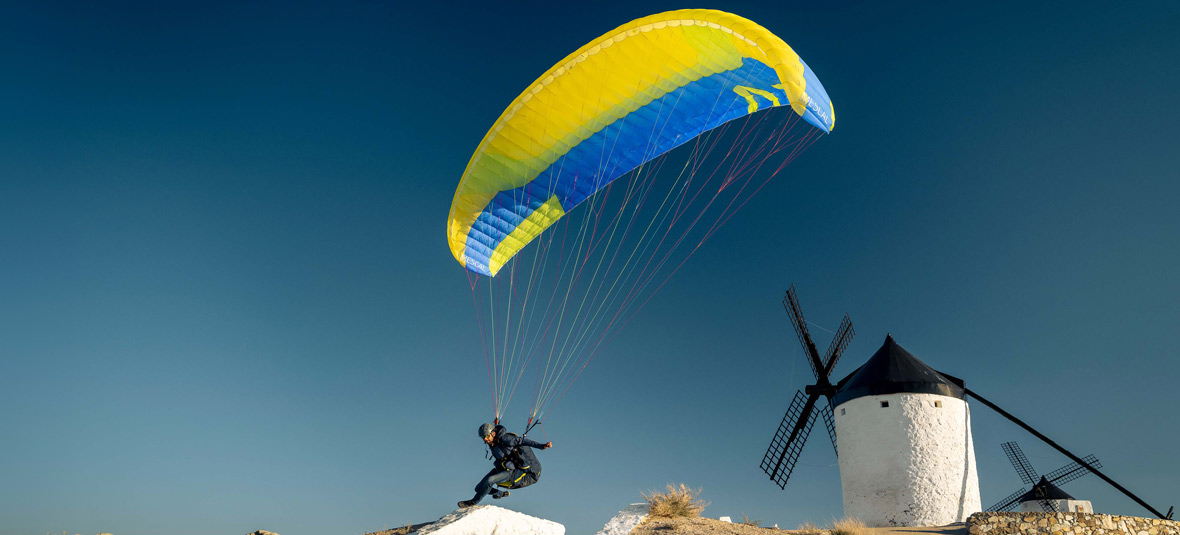
Paragliding is an exhilarating passion that offers unparalleled freedom in the skies. From take-off to landing, free flight is all about freedom and pleasure. However, to ensure safe flying and prolong the life of your equipment, paragliders require special care and storage. Here's an overview of a few steps to preserve and store your paragliding equipment.
CLEANING YOUR PARAGLIDING EQUIPMENT
Every paragliding flight leaves its mark. Indeed, in strong aerological and meteorological conditions, rain, dust, sand, dirt or any other residue can slip onto the glider. It may therefore be necessary to clean your equipment from time to time.
Paraglider
Gently shake your paraglider to remove any debris. For stains, use a damp cloth without detergent. Avoid rubbing too hard to minimize damage to the fabric's coating.
Harness
Regularly check your harness for wear and tear, and any important seams. If you feel the need to clean your harness, a quick rinse with fresh water will suffice.
Helmet
A simple damp cloth will suffice for the outside. For the inside, if the lining is removable, hand or machine wash according to the manufacturer's instructions.
Instruments
Keep them dust-free. Use a soft cloth to clean them.
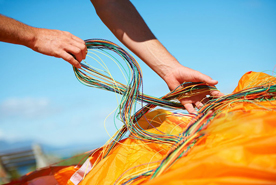
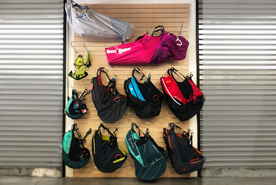
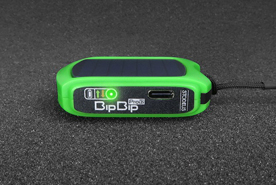
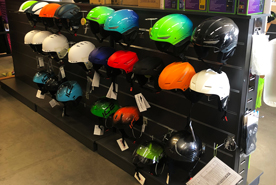
Paraglider
Gently shake your paraglider to remove any debris. For stains, use a damp cloth without detergent. Avoid rubbing too hard to minimize damage to the fabric's coating.
Harness
Regularly check your harness for wear and tear, and any important seams. If you feel the need to clean your harness, a quick rinse with fresh water will suffice.
Helmet
A simple damp cloth will suffice for the outside. For the inside, if the lining is removable, hand or machine wash according to the manufacturer's instructions.
Instruments
Keep them dust-free. Use a soft cloth to clean them.




FOLDING YOUR PARAGLIDER
Folding your glider is an essential step in preventing premature wear.
1. Air the glider : Before folding your glider, make sure it is thoroughly dry to prevent mildew from forming.
2. Concertina folding : This method preserves the glider's profile. Start by gathering the risers, then accordion-fold the sail, taking care to align the cells. Paragliders are fragile, so please be gentle.
3. Roll the paraglider : Once the concertina fold is complete, roll the glider from the inside out, taking care not to over-compress it. Please see our article on folding your wing.
You can also use rescue packing aid to help you with this task.
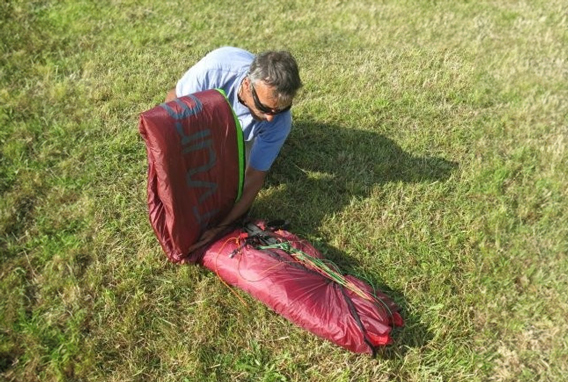
FOLDING YOUR PARAGLIDER
Folding your glider is an essential step in preventing premature wear.
1. Air the glider : Before folding your glider, make sure it is thoroughly dry to prevent mildew from forming.
2. Concertina folding : This method preserves the glider's profile. Start by gathering the risers, then accordion-fold the sail, taking care to align the cells. Paragliders are fragile, so please be gentle.
3. Roll the paraglider : Once the concertina fold is complete, roll the glider from the inside out, taking care not to over-compress it. Please see our article on folding your wing.
You can also use rescue packing aid to help you with this task.

STORING YOUR PARAGLIDING EQUIPMENT
Proper storage protects your equipment from the elements and ensures its longevity.
1. Dry, sheltered place : Equipment should be stored in a dry place, away from direct sunlight. UV rays can damage the sail.
2. Storage bag : Use the paragliding bag supplied or recommended by the manufacturer to store your glider. If you wish, you can also use a concertina bag, or a concertina compress bag.
3. Positioning : Never place heavy objects on your equipment to avoid unnecessary pressure.
4. Ventilation : Ensure good air circulation where your equipment is stored to avoid mildew and odors.
WINTERIZING YOUR PARAGLIDING EQUIPMENT
If you don't intend to use your paragliding equipment over the winter, here are a few tips to help you preserve it.
1. Cleaning : Make sure everything is clean and dry.
2. Storage : The place you choose for winter storage should be dry, cool and protected from light.
3. Pest protection : Keep your equipment in a safe place to avoid any nasty surprises from insects or mice.
4. Checking : Even in winter, it's a good idea to get out and air your equipment from time to time to ensure that it remains in good condition.
In conclusion, paragliding equipment represents a considerable investment for a paraglider pilot. By adopting these best practices, you guarantee the durability of your equipment, while ensuring safe and enjoyable flying. Take care of your equipment, and it will take care of you in the air! Fly safely and enjoy the thrills of paragliding!
DISCOVER ALL THE PARAGLIDING FAQ :
Paragliding FAQ: Frequently Asked Questions about Paragliding
Paraglider wing folding step by step
Paraglider revision : when and how to have your equipment checked ?
Paragliding weather: what are the best conditions for paragliding ?
How to choose a paragliding school ?
Paragliding airspace: how does it work ?
Where to buy paragliding equipment ?
What are the requirements for registering a paramotor wing in France ?







